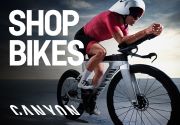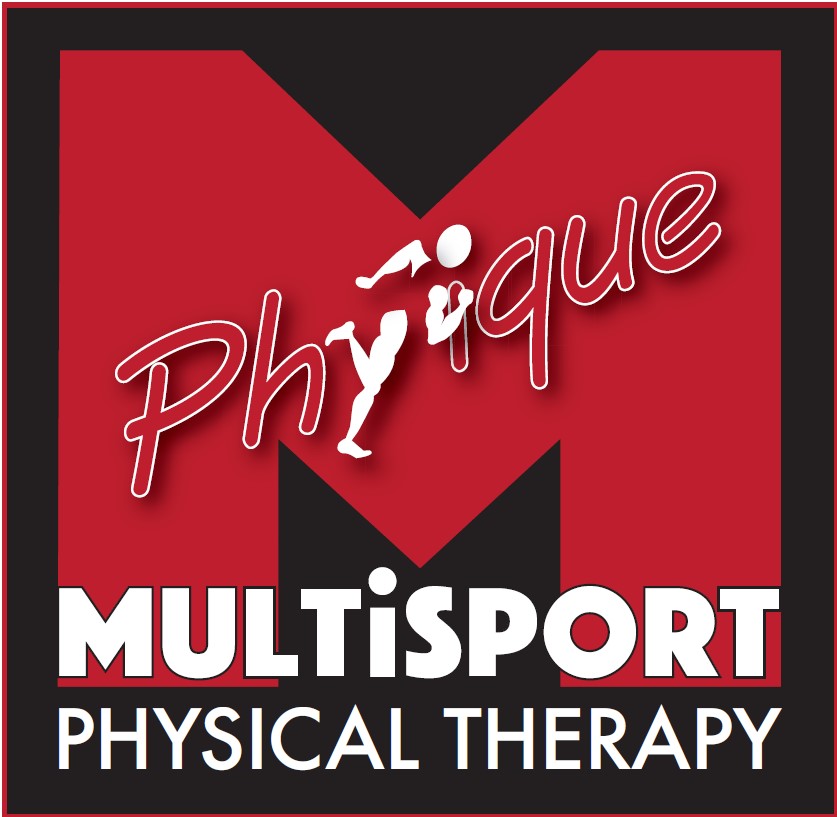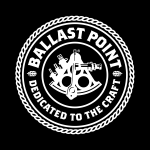Diane Ridgway

I had the pleasure recently of talking triathlon with TCSD member Diane Ridgway. Diane has accomplished a lot in her endurance career from ultramarathons to Ironman. Diane recently won her age group at Ironman Wisconsin and is already qualified to race Ironman Hawaii in 2018. I know you will enjoy getting to know Diane.
Craig: What sports did you participate in before triathlon?
Diane: It all started… I admit it, I was a confirmed tomboy who constantly berated the fact that I was born too early—before they let girls play everything. So, I participated in lots of park softball, basketball, volleyball and anything else I could get into. Constant motion was my middle name.
Finally, in high school, I was allowed in sports. I went to school at the International School Bangkok in Bangkok, Thailand where my father was stationed with the Navy for three years. There I lettered in volleyball, basketball and most importantly track. I ran all the distances (we only went up to the 800) and even ran hurdles once as no one else would. My coach would ask us to run a mile warm-up and I would complain bitterly that I was a sprinter. Years later when I was doing ultras I used to wish he could see me then.
Craig: When and how did your endurance career get off the ground?
Diane: I didn’t really get back into sports or running at all until a couple of months before my 30th birthday. Working and raising 2 boys was my focus until then. That is when Don and I got married and I had someone to help me. He was a Navy SEAL so being in shape was his daily routine. I decided I would like to try running (as I couldn’t describe my body as baby fat any longer) and that running was something I could do early in the morning without taking time away from my family. So early morning runs became the routine and other days I could run on my work lunch hour at a doctor’s office in Coronado.
Craig: What were some of the first races you did?
Diane: It took entering a race to decide I really liked running. I did the Coronado Bridge 10K run in 1979 when it went from Coronado over the bridge and ended at Chuey’s restaurant in Chicano Park. I had only run 3 miles until then. At the 3 mile mark every step after was “now this is the furthest I have ever run”. 60 glorious minutes. The same year I did a few other 10Ks and such and podiumed almost every time. And a race junkie was born.
Advance to September of 1980 when the SEALs allowed some women to do the Superfrog, a Half Ironman they created to get SEALs ready for the Ironman in Hawaii. I had never done a triathlon, but I had now been running for a year and a half and thought “Hey I know how to swim and bike why not try one?” It was a new adventure that went well and I finished and definitely decided it was fun (except for that swimming part). The run is by far my favorite part. Repeated the Superfrog in 1981 with Kathleen McCartney who went on to Ironman fame. Little glitch that year when the water temp dropped to 52 and wetsuits were not allowed. I got a severe case of hypothermia and had to be dragged to the SEAL team showers to spend 45 minutes thawing and unlocking my jaw. My support crew, Don, took me back to the transition. There I got on my bike and managed to actually catch up and pass some people and then pass more on the run. Of the 52 entries, 37 had some degree of hypothermia. Wetsuits were allowed the following year. As a side note, we heard that they had created a Diane Ridgway Guts and Glory Award. It was awarded each race to the racer who overcame the worst obstacle and still finished. I was very proud to be as tough as some of our nation’s best at triathlon. That particular award no longer exists. I am so pleased that the Superfrog’s tremendous military flavor and support continues and expanded under the Ironman umbrella. This is a credit to the original race director/participant Navy SEAL Moki Martin.
A couple of weeks later I did the Chuck’s Steakhouse Tri on Fiesta Island which at that time was in the format of run, bike, swim. I really hated that and everyone and their brother passed me on the swim. That particular race had Jeff and Scott Tinley 1st and 2nd. So, I feel a part of triathlon’s early beginnings in San Diego.
A few months later we moved to Panama after 5 months in the Monterey Bay area where Don attended Spanish language school. I got to attend also and used the rest of my time running. What a great area to run in! I have never since run in such a beautiful area. I did my first marathon that year, the Salinas Valley Marathon, which Sally Edwards of early Ironman fame won. I came in second with a 3:03 and enjoyed a huge banana split after. I had now been running for 3 years.
Panama was another great experience. I joined the Isthmus Roadrunners, a local running team, and we put on quite a few runs and the first ever triathlon with my urging. We swam in an inlet off the Panama Canal with the water so dark you couldn’t see anything including your hands, biked nearby and then a dirt road run. We had people come from as far away as Columbia for the Primer Triatlon de Panama. Trophies were very expensive so I took some of mine and replaced the women runners with men and took off the plaques and presented them. It was very well received as people loved trophies. I competed in the Marathon of the Americas for the two years we were there. It was run on the Atlantic side and started at 330 AM due to the heat. It was totally, I mean totally dark. Don rode his bike with a headlamp to show us the course. You could see all the crabs scuttle out of the way and everyone jumped when a stick was spotted thinking it was a snake.
We moved to Virginia Beach for a couple of years after that and then to Honolulu for 7 years. I kept doing running races and a rare triathlon. Getting to Hawaii in 1984 really stoked the triathlon juices though and everyone, of course, knew the Ironman. I hoped to do it someday but wasn’t sure I could swim that far. The day after I qualified for my first Kona in 1989 (which was only 6 weeks before the race) I went down to the ocean to swim two miles to be sure I could do it in the cut-off time. I was just finishing the bike portion when Mark Allen and Dave Scott were ending their run on the Queen K at the top of Pay and Save hill. That was inspiring but I just wanted them and all the media trucks out of the way so I could finish the biking. I successfully completed the race on minimal training and decided I definitely wanted to do it again someday when I had trained for it. That didn’t happen until 1991 when I placed 3rd after exiting the water in 30th. Swimming is still my weak part.
Craig: What advice would you share with someone who is sitting on the fence and has not jumped into endurance sports but wants to?
Diane: After a half marathon trail run in Colorado I had a guy point to my t-shirt and say “I would like to do that someday but I don’t think I can.” I was wearing a Leadville 100 shirt, which for those of you who don’t know, is a 100 mile trail run around the mountains outside of Leadville, Colorado. I told him, “well that is your first problem. Don’t say I am not sure I can do that. You can.” Positive thinking is the most necessary aspect of endurance events, whether short or long. He said that he worked full time and I said so did I. I agreed to meet with him and talk and he ran the race successfully the next year and the next, and the next…
The thing is, we are all busy, but if you really want something you can find time. And it is never too late to start. Remember I had never run until I was 30. I would love to see more women in older age groups especially. During the time we lived in Colorado (we moved here 2 years ago) I was doing ultras and Ironman. I used to run 18 miles to work one day a week and had to leave my house at 330 AM to accomplish that. But I needed the mileage and it was a way to get it aside from using time I could be spending with my family.
Craig: How have you involved your children and grandchildren in your sporting life?
Diane: Throughout my athletic career I have kept my family first and arranged training around their schedule. Sometimes I drove them to this or that practice and ran while they were practicing or had them ride their bike along me running. They needed little encouragement in sports and were playing soccer when they were 5 and 6. That’s the norm now, but it wasn’t 40 years ago when soccer was in its infancy here. They participated in all the team sports and decided running was fun also especially when they began winning the under 12 division. Then came the 13-19 year age group and they lost interest as they could not be competitive with a 19 year old.
As adults they have occasionally still participated in runs and I finally got to do the Escape from Alcatraz Triathlon with my oldest son, Burt. That was really a thrill, though I didn’t see him again from the time we jumped off the boat until the end of the race.
We get together in other pursuits as well. A thrill of a lifetime came this last June when my sons Burt, George and I summited Kilimanjaro together despite all the altitude sickness that we encountered.
Kids and grandkids have come to Kona to cheer over the years of competing there and the one who is not there is always tracking on the computer and calling to report when I should be at a certain spot as it is easier to track someone when you are not there.
Now in San Diego my two grandsons have both turned into runners. My oldest is competing in cross country for San Dieguito Academy. We have two years in a row done the Children for Children 5K. Three generations in the race! I am still looking for a triathlon we can do as a team. A team event is another way to get started and get your family involved. Don and I have done duathlons where he biked and I ran, for instance.
Craig: What athletic accomplishments are you most proud of?
Diane: What am I most proud of? Really and truly, what I am most proud of is that I am still doing this athletic business and enjoying it and so is my family. My mother would say,” Aren’t you getting a little old for that now?” but my boys say, “Oh boy we’re going to Hawaii again.” and my husband says, “that sounds like a fun race.”
Craig: What have been some of the most challenging races you have done?
Diane: Most challenging: to me this can have two connotations, really difficult, and those that aren’t the hardest physically but there are contributing factors that make it more difficult mentally. A couple of years that I did Kona I was also doing 100 mile trail races. I had Bob Bell ask one year which was harder. Well, a 100 mile trail run is harder than the Ironman for two reasons. It takes a lot longer and it is all running. It is however easier to train for as it is only one discipline.
On the physical note, the Hardrock 100 in Colorado in the San Juan Mountains would have to be the hardest. 100.5 actual miles, 33,050 feet of climbing, average elevation over 11,000 ft and you go over thirteen passes between 12,000-13,000 ft and one 14er. River crossings, scree fields, boulder fields, sometimes snow fields and often hours without seeing anyone and just trying to find the trail markers. You have 48 hours to complete it. The race directors describe it as ”a graduate level challenge designed to provide extreme challenges in altitude, steepness and remoteness.” It is run in a circle, clockwise one year and the reverse the next. I have done it each way. The first year I took along a camera and kept telling myself it was an adventure run (I didn’t know how truthful that was!) At that time only 39% finished within 48 hours. It took 42 hours running thru most of two nights and included falling asleep while running and hallucinating comic book covers in the bushes. Superheroes of course! But it is the most beautiful run I have ever done; wildflowers, old mining claims to say nothing of the mountains.
Mentally, Kona 2014. My knee gave out at the energy lab and I had to walk, run the rest of the way. I was recovering from a bad bike crash in January of that year and had not been able to get in the amount of training necessary. But, I started---so needed to finish.
Craig: What have been some of your favorite destination races?
Diane: Favorite destination races are usually because of the other opportunities around the venue. Don and I joke that we find a place we would really like to visit and surely there must be a race near there. That’s taken us to Ironman France where after the race we hopped on the train with only a backpack each and spent 5 days in Italy in the Cinque Terra region. Ironman New Zealand where we toured the South Island and bungy jumped before the race and Powerman Zofingen where we got a train pass and traveled around Switzerland and into France for hiking and wine and cheese tasting after the race. Mt. Tremblant for the 70.3 championships was another wonderful area to tour.
Craig: A couple of years ago you crashed at Ironman 70.3 Chile. What happened and how badly were you hurt and how long did it take to recover? Then you had back surgery last year and how long did it take to recover from that? Why do you think you were able to recover so quickly?
Diane: In January of 2014 I had a bad bike wreck at the Ironman 70.3 Chile. A lady getting her water bottle turned into me and I went straight down. I had 11 rib fractures in 7 ribs so some were broken in 2 places and a broken collarbone and hematoma in my lung. I was in the hospital in Chile for 8 days before they would reluctantly let me fly home and then went straight back into the hospital in Denver for another 7 days. I had my lung drained of blood twice (once before leaving Chile) and finally had to have surgery on it to scrape it out and then surgery on my collarbone. The hospital trauma team in Chile were impressed with my fitness and said this trauma called a “flail” chest is often associated with mortality in older people. But then they couldn’t believe I was the age I was. The surgeons in the USA were super. They were impressed with my fitness level and wanted to get me back into full competing mode and so recommended the lung surgery. But I was sidelined from everything for 3 months and then was allowed to gradually start doing things as pain permitted. So, getting ready for Kona that October was a challenge.
But, then, as I was getting back into competing and feeling good my back started giving me trouble and I was having leg numbness and finally foot drop on the left. Laminectomy and fusion was recommended for a severely crooked lumbar spine pinching off the nerve. I did not want surgery and tried to hold it off with a couple of injections but finally couldn’t even walk a block. The end of July 2016 I had a laminectomy and fusion of L4 and L5 and S1 with rods and pins. They said I would need to wear a vest brace for 3 months and then could start running in 6 months and be ready to start really training in 9 months. Well, that was just not going to work at all. I started walking a lot and finally convinced the doctor to let me ride on the stationary bike as long as I wore the vest. I then pushed the envelope a little more and asked to be able to do spinning classes if I wore the vest and didn’t twist. Finally, he agreed to let me run the Turkey Trot which was 4 months after surgery. My first running at all. Whew, was that tough but I was determined to get back to my old self. To make a long story short I competed in the Oceanside 70.3 and came in 2nd only 8 months after surgery. I went on to climb Kilimanjaro in June and do Buffalo Springs 70.3 two weeks later, 11 months after surgery, and then Ironman Wisconsin. I am my surgeon’s poster child. I attribute most of the quick recovery to the fact I was in good physical shape before surgery and very determined to get back to “normal” after. Once again, my adage of if you want something enough you will figure out a way. Drawback to the surgery is less flexibility making me even worse at getting out of my wetsuit. If only I wasn’t such a wimp and could just skin it!
We have heard lots of elite athletes talking about their comebacks and it is no different for the rest of us—determination and starting out with our bodies used to being challenged and fit. And we feel we know our bodies and what they are capable of.
Craig: What kinds of things do you and Don like to volunteer for and why do you like to volunteer?
Diane: I have always tried to volunteer where I could because it is my sport and my event whether it be running or triathlon or snowshoe racing or burro racing all of which are in my repertoire. I feel we should all “pay back”. Both my husband and I volunteer for various events and various portions of the events. This past weekend it was an Xterra triathlon in Laguna Beach where we were in the transition area. Last year it was an aid station for the Superfrog that gave me a true insight into how hard those volunteers are working. Three of us working an aid station everyone went through 7 times. I was probably just as exhausted as the athletes by the end.
Please remember to thank them when you race and volunteer sometime yourself for the fun and satisfaction of doing something for your sport.
Craig: What are your favorite benefits of TCSD membership?
Diane: TCSD is the first time I have belonged to a Tri Club. I enjoy the camaraderie and the meetings especially. Just having all the others around to tap for ideas even if I don’t join many training events. No matter how long you have been competing there is something to learn. I think it is especially beneficial for people just starting out.
Craig: What are some of the more humorous situations you have found yourself in during your athletic career?
Diane: Humorous situations. Which one was funnier? the rain storm that hit during the bike portion of the triathlon that created so much flooding in the transition area our gear floated around so we had to be running around looking for our running shoes. Or was it the snowstorm that hit during another triathlon where our hands were so cold we couldn’t unfasten our chin straps on our helmet, nor feel our feet for the run. Or the snowstorm that hit during a 50 mile trail run where the volunteers told you to” really fill your water bottles” since the water at the next aid station is frozen and the oranges and cookies looked so forlorn with their little covering of snow. Or the 20 mile snowshoe race where the temperature was -15 with the wind chill and my water bottles froze so I was reduced to eating snow (not very hydrating). Or maybe one of the years I did Alcatraz and the fog totally rolled in just as we started the swim so we couldn’t even see the shore. Then the fog horns started and I was thinking “what am I doing?” Or finishing a race and starting the sprint to pass one last person to the finish to find it had been moved 400 yards further away than the previous year. Or a burro race my burro wasn’t really into and kept pushing off the trail into a ditch.
In my case, the more ridiculous the conditions get the more humorous I find them since you might as well laugh because it is better than crying.
Craig: Who has been the most supportive people or person in your life?
Diane: There is no question that it has been my husband Don. From encouraging me in the beginning, to being by my side pushing me to be the best I can and doing whatever is in his power to make that happen. When I really started getting addicted (yes, this is the correct word) to the training and the lifestyle he continued to be supportive. If he had not, I would not have been able to follow my dreams because I think it would have affected our family negatively. Though he does not do the training, except biking with me often, he knows that I need to do the training for racing and he loves to go to the races. He is my bike mechanic and packs it up if we have to fly, and will be anywhere along a course to cheer me that he can reach. During my ultra-career, this sometimes involved racing over dirt roads all times of the day and night to get to a drop station with my gear. He would spend a couple of hours getting there and then I would be through in 5 minutes or so. When I have been injured he has been there to help me through the rehab process whether with words or his laid-back presence. He is the first to try and hold me back to follow doctor’s orders, but also the first to admit that I might not listen. Spectators and other athletes at events have said that I have the best “athletic supporter” there is and he fully deserves the title. We are Team Ridgway.
Craig: What are your future goals as an athlete?
Diane: Most immediate goal is doing well in Kona in 2018 in my new age group.
There are lots or races out there I have not tried, Challenge Roth being one, as that would be another destination race with good vacationing opportunities. I’d like to learn how to mountain bike so I can do an Xterra. And I would like to be part of a group that encourages and supports others getting into the sports of running or triathlon. I feel I have a few tips I could pass on though I could never coach like you, Craig, just pass on some of the things that worked for me. But not being technology inclined I just say they are tips.
I love to race and am always open for suggestions and love new challenges. So Challenge Roth might be next or maybe Machu Pichu or…
Craig: Diane, thank you for sharing your story. I am proud to be friends with you and Don. TCSD is lucky to have you among our members. Good luck to you in Kona next year and beyond.
Craig Zelent is a USA Triathlon Level 1 Certified Coach. Craig can be reached at 760-214-0055 or tricraigz@yahoo.com.








